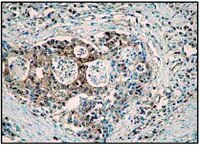APT129 Sigma-AldrichCaspase 8 Colorimetric Activity Assay Kit 25, IETD
Caspase-8 Colorimetric Activity Assay Kits provide a simple & convenient means for assaying the activity of caspases that recognize the sequence IETD.
More>> Caspase-8 Colorimetric Activity Assay Kits provide a simple & convenient means for assaying the activity of caspases that recognize the sequence IETD. Less<<Recommended Products
Overview
| Replacement Information |
|---|
Key Spec Table
| Species Reactivity | Key Applications | Detection Methods |
|---|---|---|
| Ma | ACT | Chromogenic |
| References |
|---|
| Product Information | |
|---|---|
| Components |
|
| Detection method | Chromogenic |
| Quality Level | MQ100 |
| Physicochemical Information |
|---|
| Dimensions |
|---|
| Materials Information |
|---|
| Toxicological Information |
|---|
| Safety Information according to GHS |
|---|
| Safety Information |
|---|
| Packaging Information | |
|---|---|
| Material Size | 25 assays |
| Transport Information |
|---|
| Supplemental Information |
|---|
| Specifications |
|---|
| Global Trade Item Number | |
|---|---|
| Catalogue Number | GTIN |
| APT129 | 04053252740350 |
Documentation
Caspase 8 Colorimetric Activity Assay Kit 25, IETD Certificates of Analysis
| Title | Lot Number |
|---|---|
| Caspase-8 Colorimetric Activity Assay Kit - 3243748 | 3243748 |











